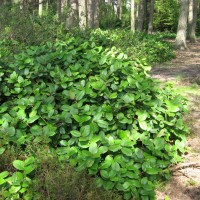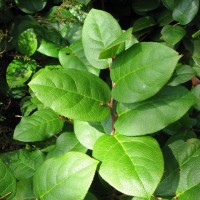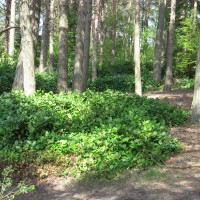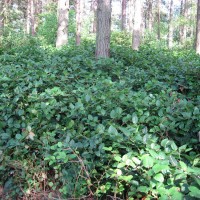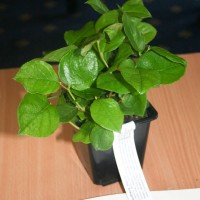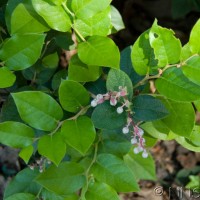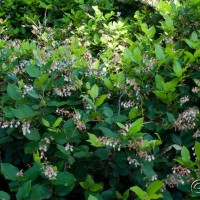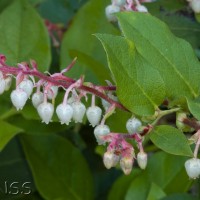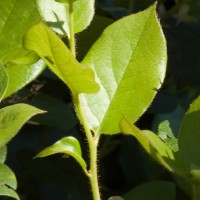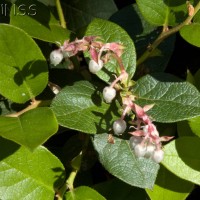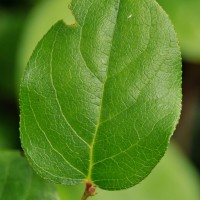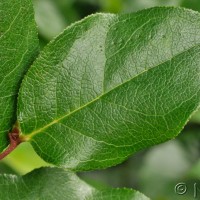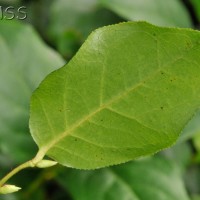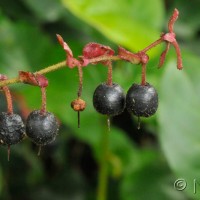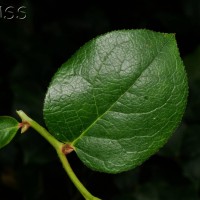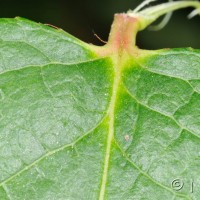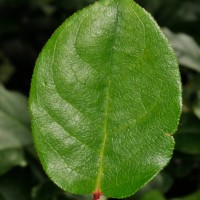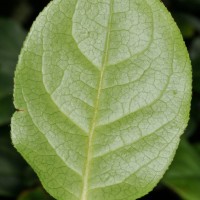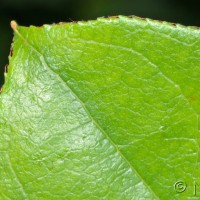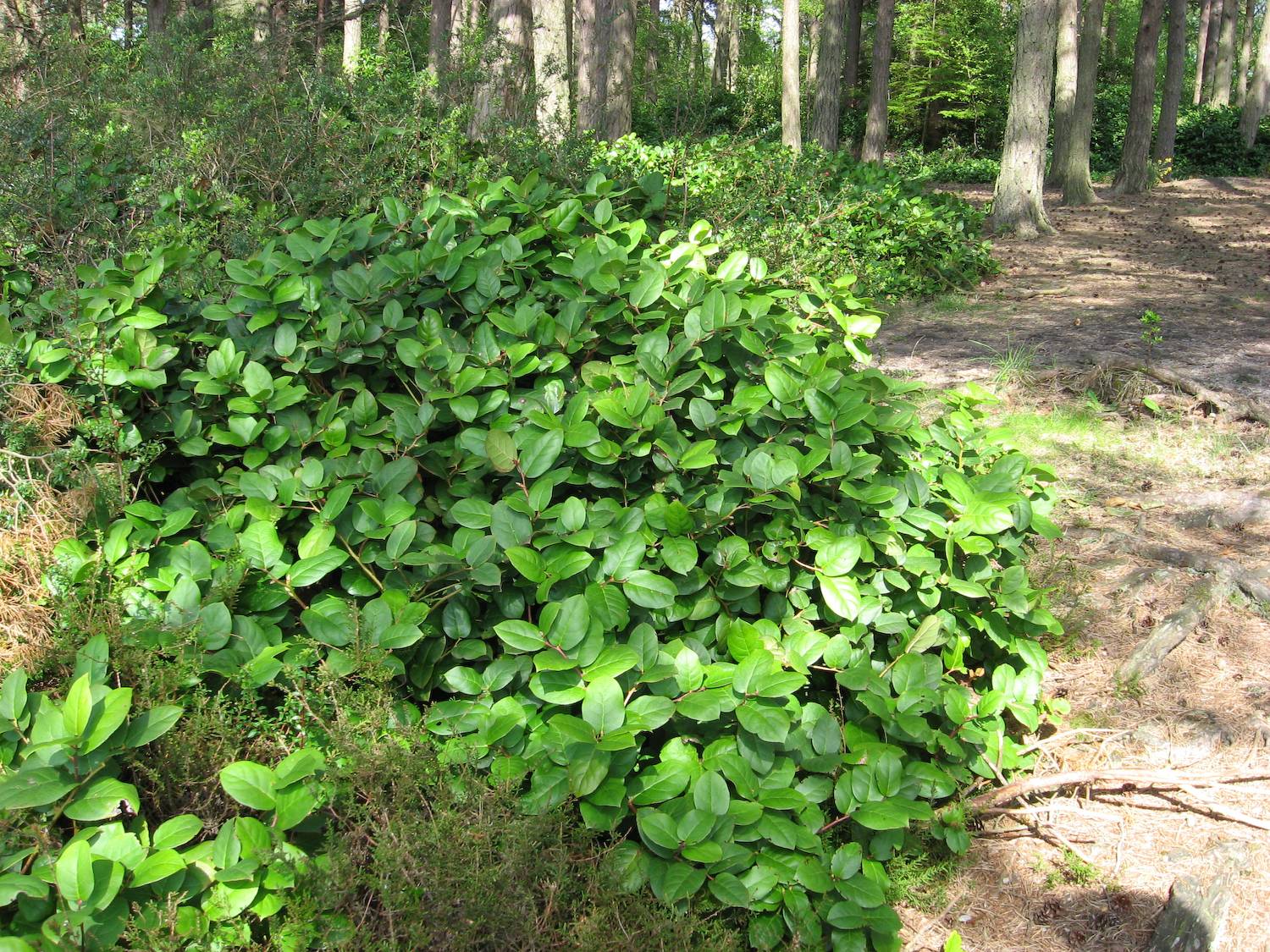
Shallon - Gaultheria shallon
Expand and collapse the sections below by clicking on the title or + / - icons.
Short description of Gaultheria shallon, Shallon
Shallon is a suckering evergreen shrub ranging from nearly prostrate to erect. It may form dense thickets up to 1.5 metres high and bears large, shiny, leathery dark green ovate leaves 5-10 cm long. Small, pink-white urn-shaped flowers are borne in groups of 5-15 on one-sided racemes followed by hairy, dark purple berry-like fruits. It grows well in both sunny and shaded habitats.
Impact summary: Gaultheria shallon, Shallon
Where it has invaded sites of high nature conservation value e.g. lowland heaths it spreads rapidly and forms dense thickets, which out-compete native vegetation. It also competes with forestry conifers in plantation and is difficult and costly to eradicate.
Habitat summary: Gaultheria shallon, Shallon
Found on acidic, sandy or peaty soils in lowland dwarf-shrub heath, acid woodland and heathland scrub.
Overview table
| Environment | Terrestrial |
|---|---|
| Species status | Non-Native |
| Native range | British Columbia, Alaska, California, Oregon, Washington |
| Functional type | Land plant |
| Status in England | Non-Native |
| Status in Scotland | Non-Native |
| Status in Wales | Non-Native |
| Location of first record | v.c.17 |
| Date of first record | 1914 |
Origin
It is a native of coastal scrub and coniferous woodland in western North America as far north as Alaska.
First Record
Shallon was introduced to GB in 1828 by David Douglas. The first record in the wild was in 1914.
Pathway and Method
It was originally imported for use as an ornamental shrub but was also planted as game cover on shooting estates. It has also been grown for use by florists in bouquets and floral arrangements.
Species Status
It is locally naturalised and scattered across GB. The New Atlas of the British and Irish Flora indicates that it had been recorded in 194 10km grid squares by 1999. Its rate of spread was very slow until 1970 (only 23 10km squares) but appears to have accelerated significantly after 1987 when it was found in another 152 10km squares. The maps produced by the NBN Gateway show that the plant has continued to expand its range. In Europe, Shallon is established in the wild in France but seems absent elsewhere.
Dispersal Mechanisms
Shallon can spread by seed and by vegetative means. Its berry-like fruits are eaten by birds which can disperse the seed well away from the parent plants. Once established in a site, however its primary means of spread is via rapid growth of rhizomes, which throw up new shoots. It can also spread by natural layering when stems touch the ground. In winter the plant is virtually dormant and may be killed by sustained cold weather as it is very sensitive to frozen soil and frost.
Reproduction
Small pink bisexual flowers are borne in pendulous racemes in late spring and early summer, and are pollinated by insects including bees and flies; they are followed by fleshy dark-purple berry-like fruits in late summer and autumn. Fruits can persist on stems until early winter when they dry and drop off and each fruit contains 100 or more seeds. Plants can also spread asexually by rhizomatous expansion and by self-layering.
Known Predators/Herbivores
It is readily grazed by cattle and deer (especially in winter) and sheep will eat young, tender leaves. In its native range Shallon is infected by numerous fungal parasites but it appears to be relatively pest and disease-free in Britain.
Resistant Stages
Seeds typically remain viable for a year following ripening and do not require chilling or stratification to break dormancy. Successful germination normally requires moist soils in partial shade and despite the large quantities of seed that can be produced seedling survival is usually very low.
Habitat Occupied in GB
It prefers acidic sandy or peaty soils and has become locally invasive on lowland heath and in acid woodland.
It is scattered in suitable sites across GB and has established a stronghold on the Thames Valley heaths in Surrey and Hampshire as well as in Dorset and the New Forest. It is also locally frequent near Atlantic coasts in mid-western Scotland but is virtually absent from most of Wales, Ireland and upland parts of England and Scotland.
Environmental Impact
Shallon often grows in habitats and sites of nature conservation importance i.e. lowland dwarf-shrub heath and scrub and can form impenetrable evergreen thickets. This growth excludes native vegetation and alters habitat dynamics, affecting a wide range of species. Left to its own devices it contributes to major habitat loss in a short period of time.
Health and Social Impact
Where it has become well-established in nature reserves and other areas used for public recreation it may reduce enjoyment of local habitats and native species. It poses no risk to human or pet health and the fruits used to be a staple food source for the native people of British Columbia.
Economic Impact
Significant costs stem from the eradication of Shallon from sites of nature conservation importance e.g. nature reserves and Sites of Special Scientific Interest and from commercial forestry. Dense, well-established thickets are very difficult to remove and may require repeated costly efforts. In conifer plantations, impacts include reduced tree growth, chlorosis of needles and mortality of tree seedlings. Shallon litter may contain allelopathic agents which inhibit growth of nearby plants.
Identification
Stace, C.A. (2010) New flora of the British Isles, Third Edition, Cambridge University Press, Cambridge.
Biology, ecology, spread, vectors
Fraser, L., Turkington, R. & Chanway, C.P. (1993) The biology of Canadian weeds. 102. Gaultheria shallon Pursh. Canadian Journal of Plant Science, 73, 1233-1247.
Preston, C.D., Pearman, D.A. & Dines, T.D. (2002) New Atlas of the British and Irish Flora, Oxford University Press, Oxford.
Distribution maps from the NBN Gateway: www.searchnbn.net/searchengine/search.jsp?tab=1&pg=1&searchTerm=Gaultheria +shallon
Management and impact
Buisson, R.S.K. (2000) Gaulteria eradication - Habitat management news, British Wildlife, 11, 411.
GB Non-native Species Secretariat: https://secure.fera.defra.gov.uk/nonnativespecies/home
Hampshire County Council website: www.hants.gov.uk/biodiversity/environment-biodiversity-landmanagement/heathland
General
General background information from Wikipedia: www.en.wikipedia.org
Royal Horticultural Society 1996. Plant Guides: Shrubs and Climbers. Dorling Kindersley Ltd, London.
Spotted this species?
Distribution map
View the Distribution map for Shallon, Gaultheria shallon from BSBI

Native range map
View an interactive native range map for Shallon, Gaultheria shallon
Legislation
This species is listed under Schedule 9 of the Wildlife and Countryside Act 1981. Read more about Non-native species legislation.

